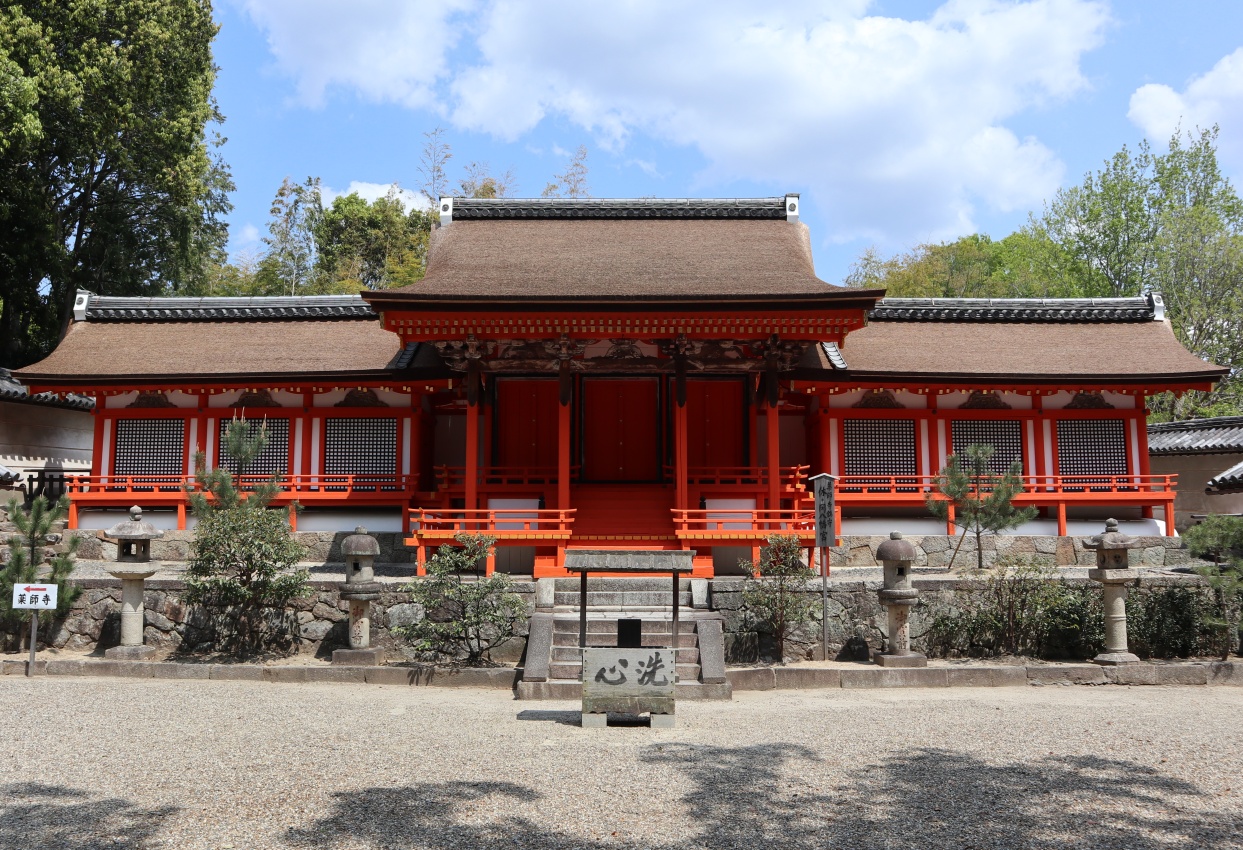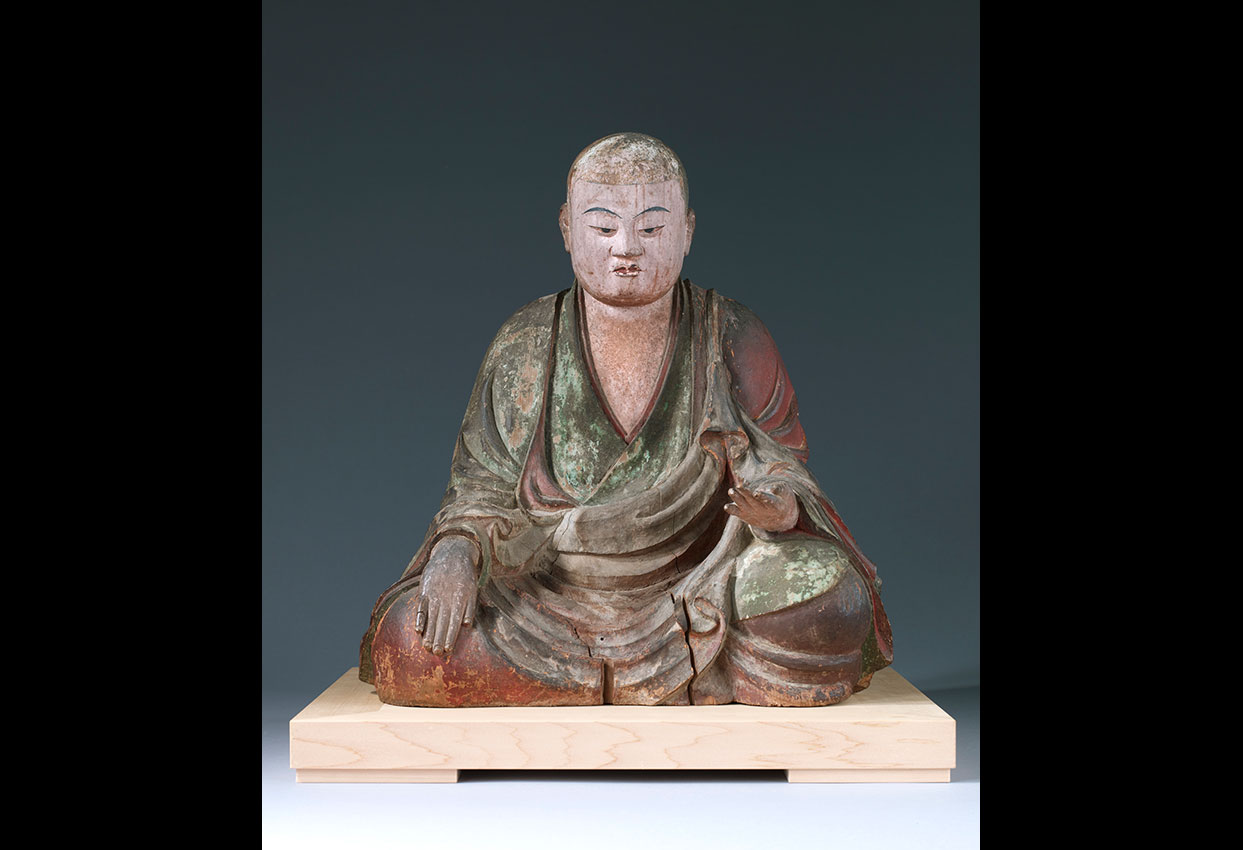18. Yasumigaoka Hachimangu Shrine
Just outside the south gate of Yakushiji is Yasumigaoka Hachimangu, a shrine dedicated to the deity Hachiman, the divine protector of Japan and guardian deity of warriors. The deities of the shrine are thought to guard and protect the temple. The current shrine, which consists of a main hall and north and south side halls, constructed on a platform composed of stacked stone, was built in 1603.
The “yasumi” in the shrine name means “rest.” According to legend, the original shrine was completed in the ninth century as a resting place for the Hachiman deity of Usa (present-day Oita Prefecture), where the head shrine of all Japan’s Hachiman shrines is located. It is said that in 807 Hachiman stopped here on his way to Daianji, another of Nara’s seven great temples, where his status was subsequently enshrined. Another legend has it that Hachiman, who was hitherto unknown, rested here on his way to attend the “eye-opening” ceremony of Todaiji’s Great Buddha (752), of which Hachiman is the divine protector.
Hachiman is worshiped in both Shinto and Buddhism, and the presence of the shrine dedicated to him next to Yakushiji is one example of how Buddhism in Japan has coexisted peacefully with the worship of native deities known as kami. Indeed, for centuries residents of the five villages that surround Yakushiji have gathered each July at another shrine next to Yakushiji’s Toindo Hall. Here, at the Ryuosha, a ceremony is held to invoke the protection of Ryu, the serpent/dragon kami who is also known as the deity of water and therefore the protector of villagers growing crops such as rice. A second festival in September is held within the grounds of Yasumigaoka Hachimangu to thank the resident deity for delivering a fruitful harvest. Thus, the syncretism of the Shinto deities and Buddhist deities and bodhisattvas at Yakushiji ensures protection not only for the temple but also for the villagers.



